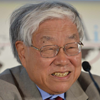
Currency fluctuations affect different populations in different ways. Consider the recent decline of the yen, which slid from around ¥103 against the US dollar at the end of 2020 to a multi-decade low of around ¥151 in late 2023. The weak yen has forced some of my economist friends in Japan to cancel their research trips to the United States because their grants now fall far short of travel expenses. On the other hand, Japan’s tourism sector is booming, as a trip to Tokyo has become a bargain.
This raises the question of whether a local currency’s appreciation or depreciation is more desirable for boosting macroeconomic performance. In the case of Japan, an archipelago that is heavily dependent on trade, a stronger yen could be beneficial, because the terms of trade usually improve as the currency’s value rises. The same volume of exports would translate into more imports.
But when a country earns substantial revenues from overseas investment, a weaker local currency increases consumption opportunities. For example, the Government Office of Japan estimates that the country’s gross national income (GNI) was 6% higher than its GDP in July 2023, largely owing to a cheap yen. This indicates that Japanese who receive more income from foreign investment now enjoy greater purchasing power.
More importantly, a weak local currency creates a moderately inflationary environment that promotes growth – what the late economist Arthur Okun and, more recently, US Treasury Secretary Janet Yellen have called a “high-pressure economy.” Such an economy generates more employment opportunities and facilitates technical progress, partly by ensuring that resources are allocated quickly and efficiently. By contrast, during a recession, people are less willing to change jobs or to innovate.
Japan’s post-World War II economy exemplifies this dynamic. The yen’s US dollar exchange rate was originally fixed at ¥360 and, even after shifting to a floating exchange rate in 1973, remained low until the mid-1980s. Dale Jorgenson and Koji Nomura found that, as a result of the yen’s relative weakness, the average cost of production was generally lower in Japan than in the US during this period, making it easier for Japanese firms to export manufactured goods to the rest of the world.
A weak yen was thus an important catalyst for Japan’s post-war economic miracle. But the country’s trade partners, particularly the US, were displeased.
In 1985, representatives of Japan, the US, West Germany, France, and the United Kingdom gathered at the Plaza Hotel in New York City and reached an agreement to engineer a significant depreciation of the US dollar, which led to a sharply rising yen. After the “Plaza Accord,” the Bank of Japan kept money supply tight enough to maintain a stronger yen. The monetary tightening stifled productivity.
After the collapse of Lehman Brothers in September 2008, the US Federal Reserve, together with central banks in the UK and Europe, implemented ultra-expansionary monetary policies. By devaluing the US dollar, this had a contractionary effect on trading partners like Japan. Unfortunately, the BOJ did not loosen its monetary policy as much as it should have in the immediate aftermath of the crisis to counteract this effect.
Under Governor Kuroda Haruhiko, however, and with the strong support of then-Prime Minister Abe Shinzō, the BOJ entered a new phase of unprecedented monetary easing in 2013. This policy succeeded in reviving the Japanese economy: nearly four million jobs were added between the end of 2012 and the middle of 2019.
The second global shock of the century came in 2020. To help rescue the pandemic-stricken economy, US deficit spending ballooned to more than 15% of GDP in 2020 and 12% of GDP in 2021. Though a substantial fiscal spending was necessary for US citizen’s welfare, spending of such a magnitude fueled US inflation, which hit 7% in 2021. The Federal Reserve Board subsequently hiked interest rates from the range of 0-0.25% to 5-5.25%.
As a result, the US dollar has soared and the yen has depreciated, which might come as a relief after a long period of a too-strong yen, contractionary monetary policy, and deflationary expectations. But the pace of depreciation, in my view, is too fast and could trigger inflation in Japan. Now that the country’s total output gap has closed, the BOJ should be prepared to implement an anti-inflationary policy using positive interest rates, rather than its experimental yield curve control.
Koichi Hamada, Professor Emeritus of Economics at Yale, was a special adviser to Japan’s prime minister. This content is © Project Syndicate, 2024, and is here with permission.
1 Comments
Timing.
Japan’s benchmark Nikkei 225 stock average briefly gained over 600 points Tuesday morning on the back of recent rises in U.S. stocks, hitting the highest level since the collapse of Japan’s bubble economy in the early 1990s.
https://japannews.yomiuri.co.jp/business/market/20240109-160730/

We welcome your comments below. If you are not already registered, please register to comment.
Remember we welcome robust, respectful and insightful debate. We don't welcome abusive or defamatory comments and will de-register those repeatedly making such comments. Our current comment policy is here.